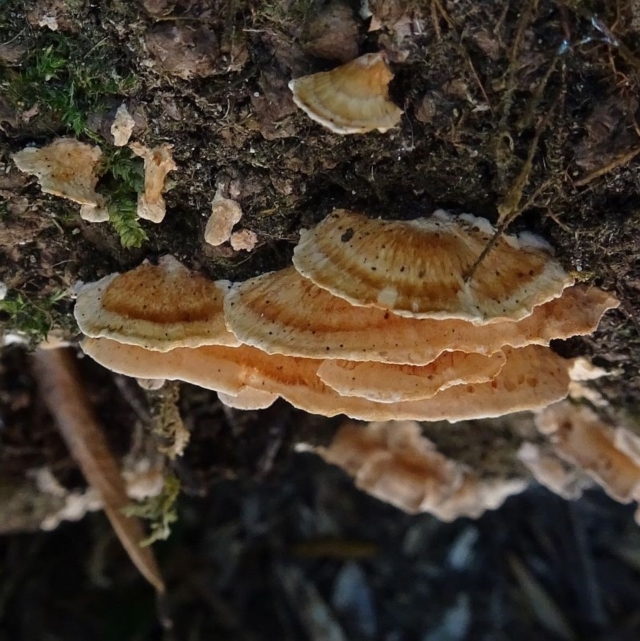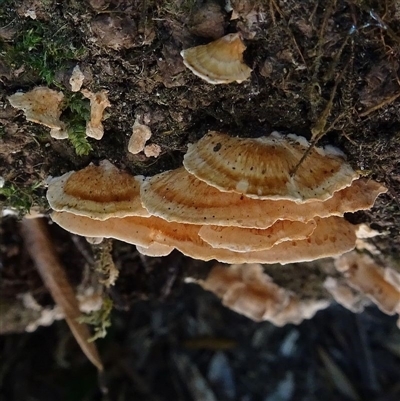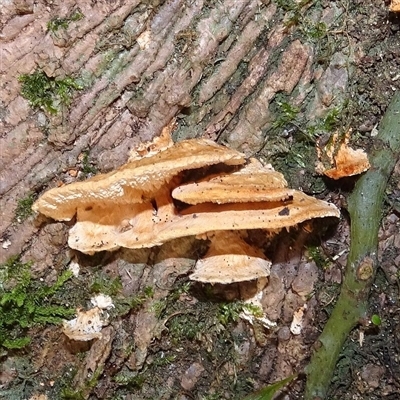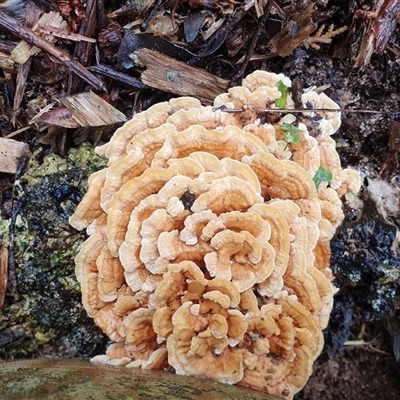Cerrena zonata
The fruit body is a leathery, shelf-like outgrowth from dead wood. A fruit body is a few millimetres thick and may extend up to 3 centimetres out from the wood. The upper surface is smooth and buff to ochraceous in colour. The underside (of a colour similar to that of the upper side) has irregular, sinuous pores or flattened or plate-like teeth that may be straight or sinuous.
Spore print: white.
The fruit bodies usually appear in large groups, with neighbouring fruit bodies merging.
The species was first described in 1854 (as Irpex zonatus), based on material collected in Sikkim. It is known from India through south-east Asia and north to China, Japan and the Russian far east; Australia and New Zealand; Argentina.
In recent times it has been known as Antrodiella zonata, the change to Cerrena occurring in paper that presented a molecular study in 2014.
Look-alikes
There are various genera with fruit bodies similar in size, colour and growth habit - when viewed from above! If you look at what’s beneath the cap you greatly reduce the possibilities. In the genus Irpex you find similar flattened teeth but with differences in microscopic features. In the genera Steccherinum and Stecchericium the underside of the fruit body has distinct teeth, spine-like or flattened (but not sinuous or somewhat maze-like as in Cerrena zonata).
Cerrena zonata is listed in the following regions:
Canberra & Southern Tablelands | Southern Highlands
Species information
- Cerrena zonata Scientific name
- Common name
- Not Sensitive
- Local native
- Non-invasive or negligible
- Up to 674m Recorded at altitude
- Machine learning
-
Synonyms
Antrodiella zonata
Location information
-
Maps
ANBG -
Places
Acton, ACT









